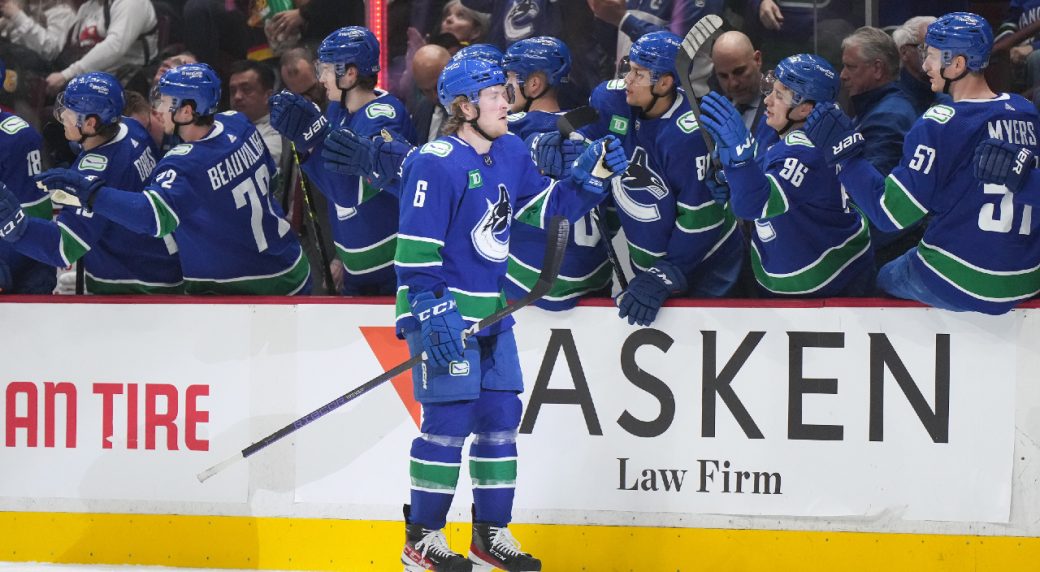At the time of writing, the Canucks have played approximately half of their season so far, accumulating upwards of sixty points which has them in the top-five in the entire National Hockey League. This provides a decent sample size of data that can be evaluated for any trends on the ice. The team has largely exceeded expectations, and put themselves in a position to host playoff games for the first time in nine years.
A driving force of the Canucks’ success this season to date has been their play at five-on-five. Vancouver has been a goal scoring juggernaut at even strength so far, ranking top-five in Goals Percentage (GF%) behind only the Winnipeg Jets. GF% is an approximation of goals scored for the team versus goals scored against

them. With such a high-percentage, the Canucks have shown that they are capable of scoring their way out of trouble, but that may not be a recipe for success come playoff time. Looking at GF% on its own can be misleading, and begs further examination. For example the Pittsburgh Penguins sit in the top five of GF%, only slightly lower than Vancouver, yet three weeks into January, the Penguins have fourteen points fewer than the Canucks.
With the example of the Penguins in mind, an attempt to determine how sustainable the Canucks’ goal scoring binge is to continue can involve comparing the GF% with the team’s Expected Goals Percentage (xG%) at five-on-five. xG% is a comparison statistic that tracks the quality of goals scored for a team versus the opposition. Having an xG% of above fifty per cent indicates that the team is controlling play more than half of the game, which would be more effective than their opponent. This is where things start to get slightly more troubling for the Canucks’ long term output. The Canucks sit in the bottom half of the league in xG%, which is contrastingly different from their GF%. The Canucks’ Pacific Division rivals: Edmonton, Los Angeles, Las Vegas, and Seattle currently sit above Vancouver in xG% — all above 50 per cent.
To increase their xG%, the Canucks need to create scoring-chances more often than their opponents, which relies on controlling the flow of play by possessing the puck. Possession through shot attempts can be tracked by evaluating the shot attempt percentage (Corsi) at five-on-five. Corsi is a shot tracking statistic, which tracks shots for a team versus shots given up to the opposition. A positive to take away from the Canucks overall standing in Corsi, is that they’re only slightly below the New York Rangers, who have enjoyed a strong season to this point. However, they’re only slightly above the Ottawa Senators (yikes!) who have been an unmitigated and well documented disaster, having already replaced their coach this season. Controlling the flow of play to create more chances than their opponents is surely an element of the Canucks’ game that they will want to improve upon as they move deeper into the second half of the season.
Despite the trends observed in xG% and Corsi, the Canucks sit with some of the best odds to make the playoffs this season, putting themselves in the same conversation as league heavyweights such as Colorado, Boston, and Winnipeg. For the Canucks to be in this position at this point in the season is a welcome change-of-pace for fans of the team who can finally look forward to home playoff games on their schedules come spring.



